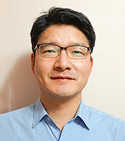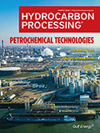Stability evaluation of hot spots in the RDS process reactor
During the end-of-run (EOR) period of the authors’ company’s residue hydrodesulfurization (RDS) process in early February 2019, some hot spots occurred in the catalysts of the reactors.
IP: 3.14.145.69
This is a preview of our premium content. Thank you for your interest—please
log in or
subscribe to read the full article.
The Authors
Lee, S. - SK Energy, Ulsan, South Korea
Sang-Mo Lee has more than 26 yr of experience as a Fixed-Equipment Engineer at SK Energy. His main tasks include root cause analysis (RCA), troubleshooting, fitness-for-service (FFS) evaluation, maintenance procedures and technical support for the refining and petrochemical business. He earned a BS degree in mechanical engineering, and is qualified as a professional engineer for welding and metallurgy by the South Korean government.
Bae, S. H. - SK Energy, Seoul, South Korea
Sun Hyuk Bae is a Chief Researcher for SK Innovation. His background is in transport phenomena and reaction engineering. He has designed over 30 commercial and pilot reactors. Prior to joining SK Innovation, Dr. Bae was a senior researcher at LG Chemical. After joining SK Innovation, he was the leader of the computational engineering group from 2009–2016. Dr. Bae earned a BS degree in chemical engineering, along with his PhD, from the Korea Advanced Institute of Science and Technology (KAIST).
Lee, D. S. - SK Energy, Seoul, South Korea
Dong-Sik Lee is a Senior Engineer and a Non-Destructive Examination (NDE) Specialist at SK Energy. He has more than 21 yr of experience in the inspection department, and supports the technologies of NDE, corrosion control and failure analysis in refineries, especially hydroprocessing and residual fluid catalytic cracking units. He earned a BS degree in mechanical engineering from Yonsei University in South Korea.
Related Articles
From the Archive









Comments